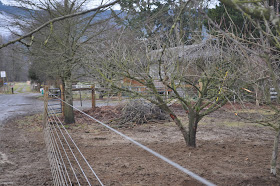So far over 1100 licenses have been applied for to grow marijuana in washington state. The license applications each specify the size of the grow area that they seek, "canopy", and the total amount of grow area has been capped at 2,000,000 (two million) square feet.
The Washington State liquor control board has stated that in the event that they get applications that exceed the total grow area allocated, that they would reduce each applicants grow size proportionally; so if they get applications that total 4 million square feet, presumably everyone would get half of what they asked for.
As of December 16th, the latest information available, the state has received:
283 licenses for tier 1 producers (2000 sq feet or less)
436 licenses for tier 2 producers (2001-10000 square feet)
397 licenses for tier 3 producers (10000-30000) square feet.
If each of these licenses is for the maximum allowed space, the total right now stands at 16.8 million square feet, a little over 8 times the total area that the WSLCB has allocated.
Not all applications will be for maximum size; not all applications will be approved, and not all approved applications will actually succeed, but it looks like we're going to be oversubscribed by a factor of 8 or 9.
So if you applied for a 2000 square foot grow, you'll get 1/8th of that, or 250 square feet; about the size of a large bedroom.
Just dividing 2 million by 1100 gives you an average grow size of 3,000 square feet. I think that they didn't realize quite how popular this would be, and it's going to be interesting to see how they deal with this huge oversubscription for production.
Here's the quote:
"The LCB may reduce a licensee’s or applicants’ square footage designated to plant canopy for the
following reasons:
If the total amount of square feet for production of all licensees exceeds the two million square
feet maximum, the LCB will reduce the allowed square footage by the same percentage.
If 50 percent production space used for plant canopy in the licensee’s operating plan is not met
in the first year of operation, the board may reduce the tier of licensure.
If the total amount of square feet of marijuana production exceeds two million square feet, the
LCB may reduce all licensees’ production by the same percentage or reduce licensee
production by one or more tiers by the same percentage. "


















